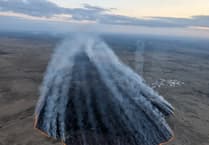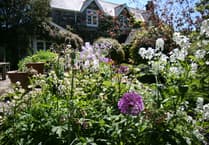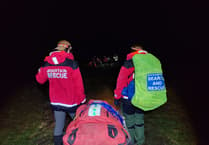The well-being of the hill farming community is fundamental to the future of Dartmoor as a national park in landscape, cultural, ecological and enjoyment terms and for the viability and sustainability of the local rural community.
Employment, care for the landscape and the environment, tourism, family structure and life, tradition, rural services and businesses are all inter-related. All these elements come together to give us the Dartmoor we know today.
The Dartmoor we all love is all owned by either individuals or organisations but has for over 5,000 years been the result of the main land use of farming. Working and re-working the land, farmers have created and maintained a large part of the Dartmoor landscape. Today over 90% of the land within the national park boundary is used for farming. Much of this area is either open moorland (common) where livestock is grazed by commoners (farmers who have rights to use the common), or enclosed moorland. The remainder is made up of enclosed farmland which mainly comprises improved grassland. In addition, woods, shelterbelts, wetlands, rough pasture, traditional buildings and archaeological features all contribute to the character of the farmed land.
The land owners, and on common land, the commoners are allowed to burn the moorland vegetation. It’s all part of the age-old art of swaling — the notified controlled burning of overgrown heath land and clearing the ground of dead vegetation so that new fresh growth can regenerate providing support for wildlife biodiversity.
Nationally burning can take place between November 1 and April 15. However, on Dartmoor a recognised voluntary code ends burning on the March 31 because, in the south west, ground nesting birds often become territorial and the skylark, meadow pipit and the rarely seen curlew are beginning to nest by then.
The Dartmoor National Park Authority, through the ranger service continues to support legal swaling by providing signs and practical assistance whenever possible. The agreed chosen sites are then notified to various agencies in compliance with the Heather and Grass Burning code. Each site will have pre-planned cut fire breaks or have other natural boundaries like tracks or walls to facilitate safe extinguishment. Throughout the duration of the swale commoners will be in attendance appropriately equipped. Once burnt, and after a drop of rain, grazing animals rummage through the area and their feet help to scarify the surface, which helps to disturb plant seeds in the soil whilst the animal respective dung assists the seeds to flourish.
Within a partnership arrangement the Devon and Somerset Fire and Rescue Service whenever possible undertake a roving inspection of known planned swales and liaise with the commoners and National Park Rangers on site.
After such a wet and miserable winter we have now had a few dry sunny days so recently on Haytor (land that DNPA owns), Haytor Commoners, a representative from Natural England and myself met on site to discuss and agree the areas that need to be swaled this year to provide better public access whilst supporting and encouraging diverse wildlife species like the small pearl bordered fritillary, marsh fritillary and the pearl bordered fritillary.
Meetings like this have been taking place across Dartmoor on various commons that are in higher level stewardship with Natural England. Time and good weather is of an essence now and swaling has been deemed more important than ever on the moors because fewer grazing animals have been released on the highland commons over recent years, resulting in the extra growth of plants such as gorse and bracken, which in turn may restrict public access and limits potential wildlife diversity.
For more information go to http://www.dartmoor.gov.uk/lookingafter/laf-landmanagement/laf-swaling



-with-lightning).jpeg?width=209&height=140&crop=209:145,smart&quality=75)

Comments
This article has no comments yet. Be the first to leave a comment.